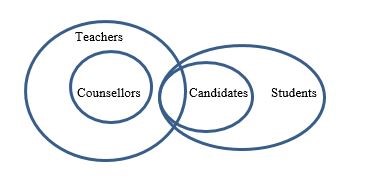Question
Statements: All counsellors are teachers.
Some teachers are candidates. All candidates are students. Conclusions: I. Some counsellors are students. II. Some students are not teachers. III. No counsellor is a teacher. In each of the questions below are given three statements followed by three conclusions numbered I, II and III. You have to take the given statements to be true even if they seem to be at variance with commonly known facts. Read all the conclusions and then decide which of given conclusions logically follows from the given statements disregarding commonly known facts.Solution
A + I = No conclusion, hence conclusion I does not follow. Here, all the given statements are positive statements and both conclusion II and conclusion III are negative conclusion. As we know that no negative define conclusion can be drawn from the positive statement, we can say that neither conclusion II nor conclusion III follows. Alternate Method: 
What basis led to the establishment of the Reserve Bank of India?
Where is the Varaha Cave Temple located?
Which one among the following is included in the 73rd Constitution Amendment of the Indian Constitution?
1. District Panchayat
2. Kshetra ...
When did HDFC Bank inaugurate its first branch in Singapore?
Strait of Kerch links which of the following two seas?
Which Indian state has ranked first in the second edition of the India Justice Report?
Financial regulation refers to policy making and financial supervision is continuous monitoring of the performance
With reference to 'Stand Up India Scheme', which of the following statements is/are correct?
1. Its purpose is to encourage entrepreneurship amon...
When inflation is going very high central bank
What is the total outlay for the "Strengthening Agricultural Education, Management, and Social Sciences" scheme approved by the Union Cabinet?
Relevant for Exams:


